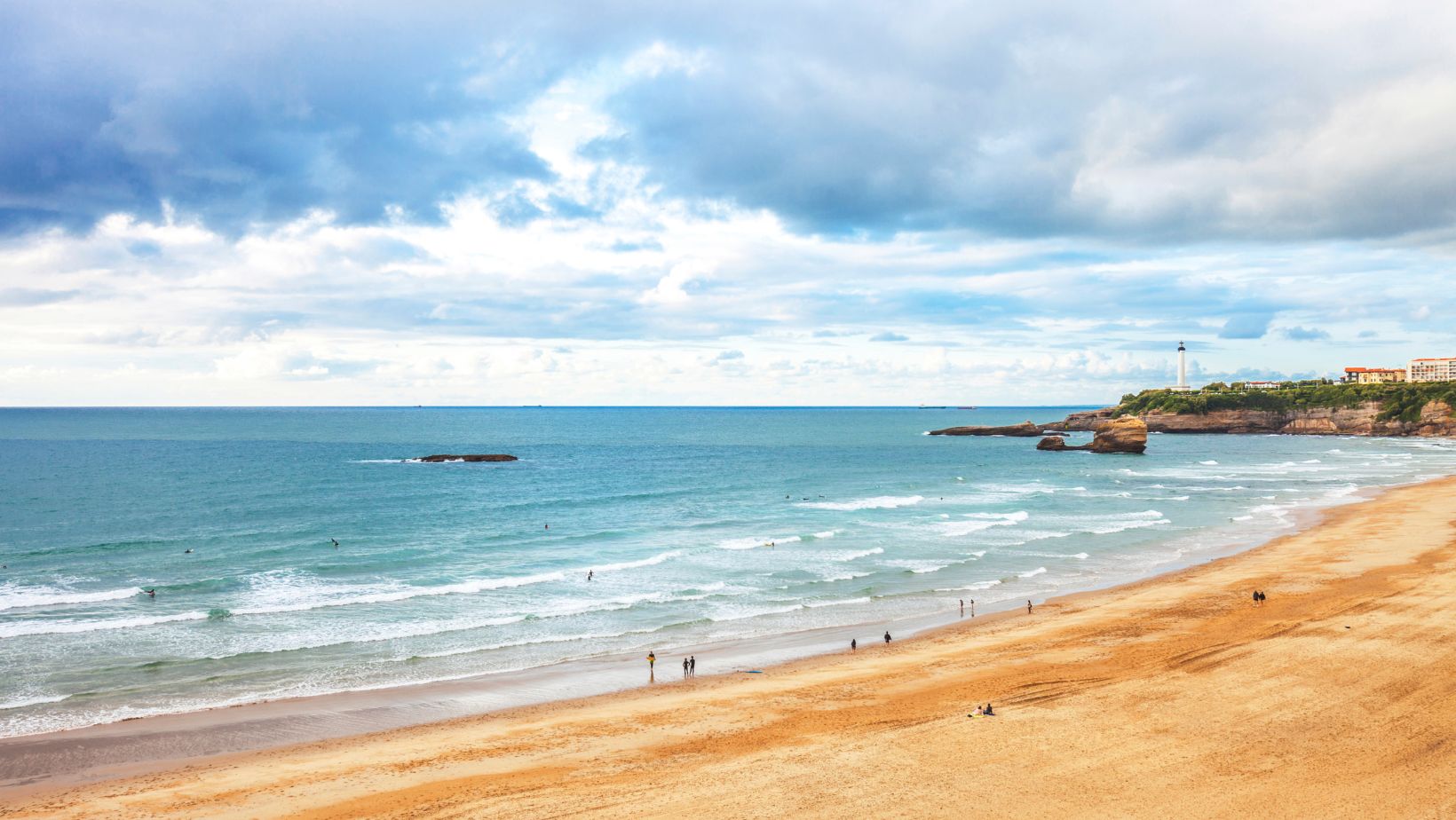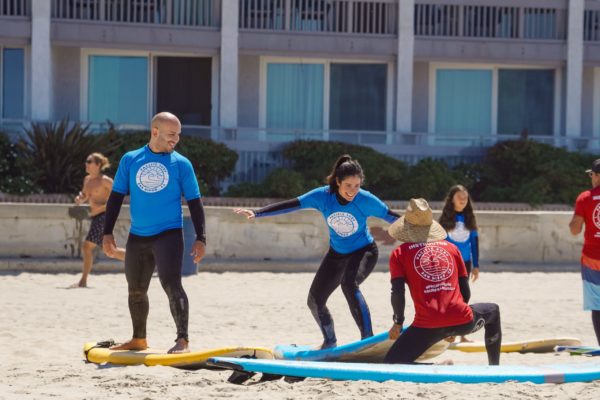San Diego, with its sun-kissed shores and consistent surf spots, is a paradise for both seasoned and aspiring surfers alike. While the city’s sandy beaches, crystal clear waters, and inviting waves have made it a popular surfing destination, it’s equally important for surf enthusiasts to comprehend the intricacies of weather and tidal influences on surf conditions. By equipping yourself with knowledge about these natural forces, you can maximize your time in the water, ride the best waves, and optimize your overall surfing experience at Mission Beach Surfing School.
In this comprehensive guide, we’ll take you through the myriad factors that impact the waves in San Diego, their interplay with the local climate, and how these elements contribute to the ever-changing surf conditions. We’ll also discuss the best practices for monitoring wind, swell, and tide forecasts so you can be well-prepared for your next surf session. Furthermore, we’ll emphasize the importance of understanding the unique characteristics of each surf spot in San Diego and how the tides affect them differently. In short, we’ll help you develop a well-rounded approach to ride the waves with confidence, skill, and finesse.
Before delving into the nitty-gritty of weather and tides, it’s crucial to lay the groundwork for understanding the basic principles governing these natural phenomena. For instance, it’s worth noting that wind plays a pivotal role in shaping wave quality, with offshore winds being ideal for clean, well-formed waves. Similarly, swell direction, size, and period are essential factors that determine the power and shape of the waves, with long-period swells producing more potent and better-formed waves.
Moreover, the impact of weather conditions on surf cannot be overstated. Factors such as rain, fog, and storms can significantly affect the quality of surf sessions by altering water quality, visibility, and the overall safety of surfers. Keeping a close eye on local weather forecasts is indispensable in anticipating and preparing for such challenges.
Undoubtedly, tides are another key element in the wave equation, and understanding their effect on various surf spots is essential for any surfer wanting to make the most of their time in the water. The gravitational pull of the moon and sun causes the rise and fall of the ocean’s surface, creating high and low tides with unique characteristics that influence the surf conditions. Being well-acquainted with tide tables and knowing when and where to surf during different tide stages can be a game-changer for your surfing experience.
Armed with extensive knowledge of weather and tides, you’ll be in a prime position to harness the forces of nature to your advantage and elevate your surfing skills. And there’s no better place to put your newfound expertise into practice than the Pacific Surf School at Mission Beach. With experienced instructors by your side, you’ll learn to navigate the dynamic surf conditions and make the most of every wave that comes your way.
So, if you’re ready to embark on an unforgettable surfing journey in San Diego, sharpen your skills, and immerse yourself in the world of waves, weather, and tides, look no further than this comprehensive guide. Happy surfing!
When it comes to finding the perfect wave, surfers in San Diego know that understanding the impact of weather and tides is essential. With its beautiful coastline and consistent surf, San Diego is a prime surfing destination. However, to make the most out of your time in the water, you need to be aware of how weather and tides can play a role in surf conditions. In this article, we’ll delve into the factors that influence the waves, and how you can use this knowledge to improve your surfing experience at Mission Beach Surfing School.
Weather Impact on Surf Conditions
Wind, swell, and weather conditions all contribute to the overall surf conditions in San Diego. Here’s a breakdown of each element and its impact on the waves:

Wind
Wind is a crucial factor when it comes to surfing, as it can either create the ideal wave or ruin your surf session. Offshore winds (blowing from land towards the ocean) are perfect for surfers, as they help to groom the waves, making them cleaner and more manageable. On the other hand, onshore winds (blowing from the ocean towards the land) can create choppy, disorganized waves, making it difficult to catch a clean ride. To check the wind forecast, websites such as Surfline and Magicseaweed are reliable sources.
Swell
Swell refers to the series of waves generated by storms out in the open ocean. When these swells reach the coast, they create the surfable waves we all love. Swell direction, size, and period greatly influence the quality of waves in San Diego. A long-period swell (more than 12 seconds between waves) usually results in better-formed, more powerful waves, while a short-period swell (less than 8 seconds) tends to produce smaller, weaker waves. Monitoring swell forecasts is essential for predicting when and where the best waves will be.
Weather Conditions
Rain, fog, and storms can all impact surf conditions. Heavy rain can cause runoff from the land, which can lead to poor water quality and even closures of some beaches. Fog can reduce visibility, making it difficult to spot incoming waves and other surfers, which can be dangerous. Storms can cause strong currents, large waves, and unpredictable conditions, which can be hazardous for inexperienced surfers. Always check the local weather forecast before heading out to surf.
Tides Impact on Surf Conditions
Tides play a significant role in determining the quality of surf in San Diego. The gravitational pull of the moon and the sun causes the rise and fall of the ocean’s surface. High tide occurs when the water is at its highest point, whereas low tide is when the water is at its lowest.
Different surf spots in San Diego work better at different tide conditions. Some breaks are best on a rising tide, while others work better on a falling tide or during a specific tide range. Understanding how each surf spot is affected by tides will help you determine the best time to hit the waves.
To check the tide tables, you can use websites such as Tides4Fishing or the National Oceanic and Atmospheric Administration (NOAA) website.
The Pacific Surf School Advantage
Now that you understand the impact of weather and tides on surf conditions in San Diego, you’re ready to make the most of your time in the water. However, if you’re new to surfing or looking to improve your skills, there’s no better place to learn than at Pacific Surf School. Our experienced instructors will help you navigate the ever-changing conditions, ensuring you have the best possible experience at Mission Beach Surfing School.
Don’t just take our word for it – come and join us for a surf lesson in San Diego and experience the thrill of riding the perfect wave with the guidance of our expert instructors.







